The January slump: a financial trough following the Christmas spike. So, times are quiet and money scarce. What better time to plan to save money on your overheads?
Some of the energy reduction costs you can make will cost you nothing and others, which will require a bit of investment, have pretty short payback times. After that, you are quids in.
A lot of what you spend on energy goes through the roof and out the doors and windows of your property. But legislation is enforcing changes.
Back in 2010 the government said that energy suppliers must install Smart meters in 26 million domestic and commercial properties by 2020, doing away with estimates and seeing exactly how the costs clock up. By that same year, electricity bills are forecast to have increased by a massive 47%.
The first thing you should do this month is either put a date in your diary for when your energy contract is due for renewal (taking into account the amount of notice required) or, even easier, get a broker like Makeitcheaper.com or Power Solutions. They don’t charge you.
They all get the same commission from whichever energy company they place the contract with so choose a broker which works with all the major energy suppliers. The broker will keep track of your renewal dates. It’s just like a car insurance broker.
Is it an open and shut case?
Five years ago Jonathan James made trade press headlines with his compelling case for putting doors back on the chillers at two of his sites in Cambridgeshire (he currently owns six sites, five of which are leased to BP and Petrogas).
With open-deck chillers the running costs were £13,577 per annum and for closed doors it was £5,393. These jaw-dropping figures are for all the chillers in a 1,600sq ft store.
"It’s a massive saving of £8,184.12 per annum," said Jonathan at the time.
He wondered back then whether the move would inhibit impulse purchases due to the door acting as a ’barrier’ but it was in fact counteracted by people spending longer browsing the chilled offer because they were in a warmer environment. He now says: "It’s quite staggering how it’s moved on. Putting doors on chillers is the norm now. Refrigeration companies say it can reduce your refrigeration costs by 40% and given that refrigeration is a high percentage of overall costs, this is huge."
At one point he met the woman responsible for buying chiller doors for the Tesco Express estate. She told him that, in one year, they saved £4m.
Jonathan’s tip is to signpost it in easily-understood language. "When we built eco-friendly Littleport we put up signs that said ’this is the equivalent of saving two houses’ entire energy’, or ’this is the equivalent of a million boiled kettles’ we didn’t talk about kw savings. Customers can’t relate to that."
But he concedes it might be an idea to leave the doors off the grab-and-go lunchbox chillers.
Simon Robinson, owner and co-founder of 10-year old Delta Refrigeration says that from 2011 he could see that doors were the future. He had been speaking to a few Spar stores he lost a sale and visited to find out why. The retailer was all excited by the acrylic doors on his chillers.
"The principle was brilliant. But it didn’t look durable enough and condensation was a problem. We thought we could do it better with a single pane of glass with a low-E coating.
"We sold a staggering amount of single-glazed doors in 2012 and doubled our turnover to £5.5m. Look at our map we put doors on the country!"
In summer though, high humidity could still cause condensation problems unless you had air con. "So we moved on to double-glazed glass. It’s all about having the outside warm and the inside cold. Double-glazing works in any store (regardless of air con). We’re fridge people but I had to learn all about glass."
Subsequently Delta launched Total Vision double-glazed acrylic, completely frameless with 97% clarity. "The whole point is to save energy but sell the goods as well. If you replace old equipment with new equipment with doors and condensing units it’s going to be 60% more efficient than an open multideck. If you can achieve that with a frameless, you’ve nailed it!"
He recognises that during peak periods doors could be a slight hindrance but, eureka, acrylic is light, on average around seven kilos (compared with 20 if it’s double-glazed glass) and staff can just unhook the doors there are no health and safety issues because you’re not dealing with glass.
ACS Shop Report reckons 45% of retailers now have doors. Which means 55% do not. Payback varies but averages at three-and-a-half years. However, Roger Shenton, development director at Enviroglow, says: "It would be easy for us to recommend doors, but we simply don’t believe they deliver on their projections."
Enviroglow was heavily involved in the Kay Group’s launch a few months ago of what is claimed as "the most energy-efficient fuel station and store in the country". On another recent refit at Primrose Valley Service Station, owned by Jos Richardson and situated just outside the Yorkshire village of Hunmanby, Enviroglow installed Sedna Aire’s E-volve cabinets. They are open-fronted.
In addition, ’SolarCool’ technologies were installed on both the refrigeration and air conditioning systems by harnessing free solar energy to increase the compressors’ capacity.
And there is more to come. Mark Crabtree of Sedna Aire UK says: "We have also secured the shopfitting contract for Jos Richardson’s next project (Filey). We are presently testing a phenomenal new product that further reduces the energy consumed on commercial refrigeration in the winter months."
Electrifying savings
The size of a small fridge and positioned between the mains intake and the meter, a voltage optimiser won’t win any beauty prizes, but it will save you money.
Brian O’Hagan, managing director of Eco-monitor, says the eco-system360 is ideal for forecourts and c-stores because of its small footprint. It takes a store’s voltage from around 242 volts down to the European Standard of 220v. It lowers consumption cost and extends the life of the equipment.
"We are seeing savings of eight to 16%. Its unique selling point is the intelligence inside it. It monitors all the energy consumption and we develop reports from this. The key thing is we can prove the savings."
The average cost of an installation for a business that spends about £15,000 on energy for a 1,500sq ft store would be £4-5,000 and the payback would be around three years.
"Jonathan James saved £6,500 in his first year in his 6,000sq ft Budgens in Dersingham."
Work is about to start on installing LED forecourt lighting across Penny Petroleum’s 24 sites.
The Top 50 Indie operator is investing £50,000 in lighting and installation and calculates payback inside 18 months.
"In terms of illumination and efficiency, LED lighting has improved considerably in the past two years," says David Penny, owner of Penny Petroleum. "We know that substantial energy efficiency gains will be achieved on the forecourt without compromise to performance.
"The next step is to undertake a similar programme within our shops."
Ramsay MacDonald, retail director at Certas Energy, says: "Escalating utility bills are threatening the profitability of the independent retailer and LED is a proven way of bucking the trend. Our experience is that improved energy efficiencies can reduce bills by as much as 70% and that’s why we are encouraging all forecourt operators to prioritise this investment.
"Certas Energy will explore ways to support any of its dealers who are ready to make the switch."
Lightbulb moment
Our sister paper The Grocer launched a campaign in November 2014 calling for a mass switch to LED in retail. It pointed out that, over the past three years, the price of LED has plunged by more than 40% while, at the same time, the cost of electricity is heading in the opposite direction. And to put it into easily-understood savings, it reports that an LED spot costs £29 to run over its lifetime whereas a regular halogen would cost £206.
Judging by the feedback published in subsequent issues of the magazine, the support for the campaign is full-on.
in brief
LED lighting uses 70% less electricity to provide the same amount of light, says supplier Power Solutions which also acts as an energy broker specialising in businesses. The company can often change you over without changing the fittings and the payback is around 18 months.
Normal lamps produce 70% heat and 30% light; with LED it’s the reverse only better: 20% heat versus 80% light, so the voltage can be dropped.
Retrofitted chiller doors have been added to the Energy Technology list so you can claim back your enhanced capital allowance.
Many retailers have reported savings by simply installing chiller strips and timers to turn off or turn down unnecessary refrigeration, like drinks coolers, overnight.
Sensors that turn off lights when a room is not in use equals more savings.
Show off your signage
If you want your forecourt to have that ’come hither’ look, consider LED illuminated contour tube lighting. Some forecourts do not choose to illuminate their external signage but more and more are choosing to show off their brand and improve their image.
Visive has been in the business for around 15 years BP was its first client and remains one to this day.
The company’s Hi-Lite11 has evolved over 10 years to become the premium neon-replacement contour LED tube in the world.
It is described as ’architectural’ contour lighting, which will clue you in that Visive works closely with designers to develop custom-built colours.
Hi-Lite11 offers plenty of advantages. It’s 80% cheaper than neon. It’s made from tough acrylic in a wide range of colours which can be bespoke and which won’t lose their colour when turned off. It’s safe and cool to touch and looks forward to a long, maintenance free life making it ideal for inaccessible areas. Tough too so extreme weather is not a problem.
Sales development director, John Scholey, adds that it is nearly unbreakable and that its power usage is extremely low. It is also easy to fit using innovative clip technology. He believes that branding will become more important.
"We are also finding that we are receiving more interest from the convenience retailers on sites. Again all operators are looking for different ways of promoting their shops and maximising value; we believe that our Hi-Lite tube is an ideal way of increasing foot traffic in the stores."
And, as he points out: "Rebranding happens all the time, so there’s never a dull moment."





















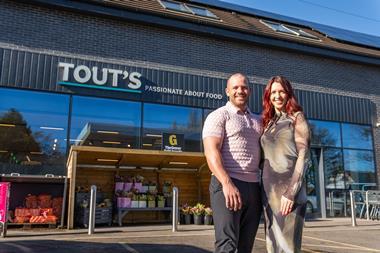
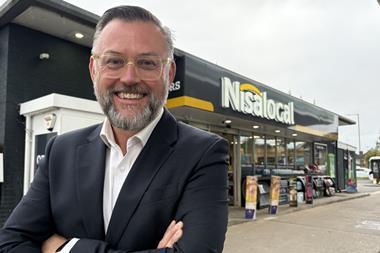

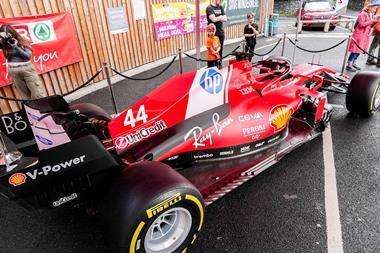
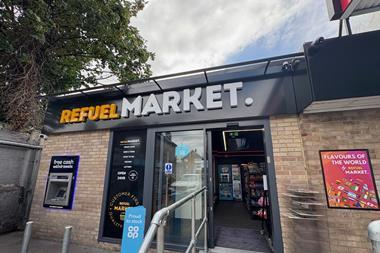
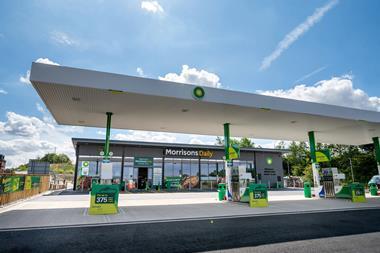


No comments yet